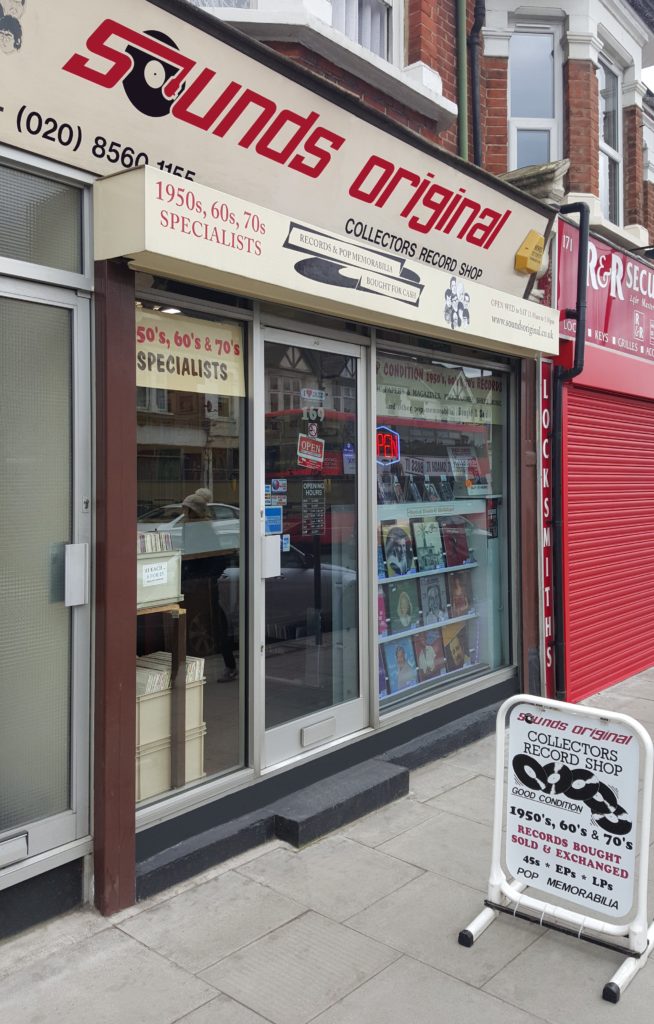
Sounds Original, South Ealing Road, W5
Endnotes, April 2020
Stuart Millson, on the forgotten pleasure of browsing for records
With the near demise of the record shop (our older readers may remember the much-loved Farringdon Records at Cheapside or Harold Moores in the West End), it is the high street charity shop that has now become the unofficial forum for those classical-music-loving refugees who dislike the current vogue for “downloads” or ordering online. Many such establishments now seem to contain at least one row of classical CDs – some even offering a section devoted to vinyl. On a recent visit, prior to the Coronavirus onslaught, to an extremely well-stocked Oxfam in Tonbridge, I discovered a substantial collection of CDs – Deutsche Grammophon, Philips, EMI, Decca – recordings which seemed to be in near mint condition; the casing and packaging indicating that their former owner had curated his or her collection with extreme love and care.
Decca box-sets of Benjamin Britten folk-songs; Boult and Handley in Elgar for EMI lined the shelf – then leading the ranks, in their famous, distinctive yellow livery of Deutsche Grammophon: Karajan’s final recording – Bruckner’s monumental, yet radiant Seventh Symphony with the Vienna Philharmonic; Carlo Maria Giulini’s intense, substantial, finely-paced Brahms Symphony No. 2, again from Vienna; Abbado and the Berlin Philharmonic in Mahler’s heaven-storming ‘Symphony of a Thousand’; Ivo Pogorelich, the much-admired, Belgrade-born piano genius – and still a young artist on his 1990 recording of Chopin’s Op.28 Preludes. The prelude No. 15 in D flat major, the celebrated ‘Raindrop Prelude’, is given perhaps its most gorgeous interpretation on record, each touch of the Steinway evoking slow-moving raindrops on the windows of Chopin’s Mallorcan mountain fastness.
I also spied another early-1990s recording, this time from Decca: Herbert Blomstedt’s brilliantly sound-engineered recording with San Francisco forces of Orff’s inter-war cantata, Carmina Burana, inspired by the verses and songs left to posterity by Bavarian mediaeval monks. The CD cover artwork is particularly striking – and it has to be said, more imaginative than Deutsche’s CDs which tend to show just photographic portraits of their artists. For the Orff, the Decca art department created a strange, magical nocturnal scene – a crescent moon, stars, a nightingale and woodland, in which a monk, jester and king hold goblets and musical instruments. They set the tone for what is to come: Orff’s one-hour phantasmagoria, beginning with the mighty chorus, the turning of the wheel of fortune – O Fortuna – then subsiding, and leading to the first slanting light of springtime; the Tanz on the mediaeval village green; the oblivion of the tavern – with the ‘Abbot of Cockaigne’ addressing his congregation of drinkers (a startling, challenging character-role for baritone, Kevin McMillan). The work is also distinguished by some Puccini-like sequences for soprano, Lynne Dawson, torn between earthly and spiritual love in the exquisite, two-and-a-half minutes, In Trutina:
“In the wavering balance of my feelings set against each other, lascivious love and modesty. But I choose what I see, and submit my neck to the yoke; I yield to the sweet yoke.”
Decca’s recording is sharply done, with the San Francisco Symphony Chorus, Chorus-master, Vance George, captured by the microphones in astonishingly-precise, chamber-like detail. The San Francisco Orchestra – every fibre of the whole ensemble, every solo, every tap on the percussion instruments – comes to life, making the production an alternative to the more sumptuous, operatic versions of the cantata, from conductors such as Previn and Muti from the mid- to late-1970s.
At the time of writing, all live music across Britain and the Western World has come to a halt. The health emergency has closed our concert halls and recording studios. We hope and pray for a end to the unfolding nightmare, in which hospitals and governments announce grim stories and statistics with each passing day. As Orff’s wheel of fortune turns, we can take solace in our recordings and record collections, in which are captured for all time, the very highest achievements of civilisation: the symphonies of Brahms, Mahler and Bruckner and the peace and serenity of Chopin’s fleeting raindrops.
Selected recordings:
Orff, Carmina Burana, Blomstedt, San Francisco Symphony Orchestra and Chorus, Decca, 430 509-2.
Chopin, Preludes, Deutsche Grammophon, 429 227-2.
Brahms, Symphony No. 2, Vienna Philharmonic Orchestra/Carlo Maria Giulini, Deutsche Grammophon, 435 348-2.










